Occupational Safety Training for 3D Printer Operation
99,000 ₫
Note: The above price is calculated for one person and may fluctuate depending on the number of course participants and market movements. For more accurate pricing support, please refer to the pricing table or contact our consulting staff directly.
Occupational safety is an important issue when operating 3D printers and needs to be addressed promptly to ensure the health and safety of workers and enhance the reputation of businesses here. The Occupational Safety Training course is one of the effective solutions to raise awareness about accident prevention for workers operating 3D printers.
Table of Contents
Toggle1. Overview of 3D Printers
a. What is a 3D Printer?
A 3D printer is a type of computer-controlled device used to create three-dimensional (3D) objects by building them layer by layer from consecutive materials. This process is commonly called “3D printing” or “additive manufacturing” and differs from traditional methods of machining or subtractive manufacturing, where items are typically made by cutting and shaping large blocks of material.
A 3D printer works by reading a 3D model from a digitized design file (usually created with CAD software) and then constructing the item by placing and solidifying layers of material, often plastic, metal, wood, or other materials. 3D printing technologies can vary, including Fused Deposition Modeling (FDM), Stereolithography (SLA), and Selective Laser Sintering (SLS).
The applications of 3D printing are diverse and have rapidly evolved from creating product prototypes to manufacturing components for aircraft and medical devices. It is also widely used in art, design, education, and even for producing food and simulating biological systems. 3D printing offers significant potential for creating personalized and customized products tailored to individual needs.

b. Applications of 3D Printers in Manufacturing
3D printers have had a major impact on manufacturing and industry thanks to their ability to create precise, customized, and cost-effective parts and products. Below are some key applications of 3D printing in manufacturing:
- Prototype creation: Manufacturing companies use 3D printers to quickly produce prototypes for testing and evaluation before moving to mass production. This saves time and resources compared to traditional prototyping.
- Custom parts production: 3D printing enables the production of customized components for specific applications. This is especially useful in healthcare, where personalized medical parts can be created for patients.
- Precision and complex manufacturing: 3D printers can create highly precise and complex products and parts that traditional technology struggles to produce. This is particularly important in aerospace, automotive, and processing industries.
- Customized products: Customized products can be easily made via 3D printing, from sports shoes to household items, meeting consumer demands for personalized items.
- Material savings: 3D printing uses material only as needed, reducing waste and saving materials compared to traditional processes.
- Rapid product iteration: 3D printing allows easy modification of designs and fast production of new products in a flexible manner.
- On-demand production: With the ability to produce items as needed, 3D printing is suitable for on-demand manufacturing, reducing large inventories and related costs.
- Tool-free base production: In some cases, 3D printers can produce products without special tools or molds, lowering production costs and preparation time.

c. Which industries use 3D Printers
3D printers have greatly influenced many manufacturing sectors. Here are some key industries that use 3D printing:
- Automotive industry: The automotive industry uses 3D printing to produce precise and customized parts and components, helping reduce weight and improve vehicle performance.
- Aerospace: Companies in aerospace use 3D printing to produce aircraft and spacecraft components, especially complex and vacuum-shaped parts.
- Healthcare: In healthcare, 3D printing is used to create customized medical parts such as implants, dental devices, and training models for education and surgery.
- Manufacturing industry: Manufacturing uses 3D printing to produce custom products and machinery components, optimizing production processes and reducing downtime.
- Renewable energy: 3D printing is used to produce components for renewable energy, such as solar panel parts and wind turbine blades.
- Pharmaceuticals: In pharmaceuticals, 3D printing is used to create pills with customized shapes and dosages for each patient.
- Food industry: It is expected that in the future, 3D printing may be used to produce customized foods such as candies and chocolate.
- Fashion industry: In fashion, 3D printing has been used to create innovative fashion designs and customized accessories.
- Construction: 3D printing is also used to build structures such as houses and bridges using materials like concrete and special compounds.
- Education: 3D printing has applications in education, helping students understand production processes and practice creative design.
2. Overview of Occupational Safety Training for 3D Printer Operation
a. What is Occupational Safety Training?
- Occupational safety training for 3D printer operation consists of lessons that provide awareness of how to prevent workplace accidents for employees. Workers directly operating 3D printers are classified under group 3.
- The training course helps employees identify and prevent hazards, reducing the risk of workplace accidents during operations.
REGISTER FOR OCCUPATIONAL SAFETY TRAINING
b. Training Duration
Initial occupational safety training duration:
- Total training hours must be at least 24 hours, including examination time.
- 8 hours of theory on policies, regulations, and labor safety laws
- 8 hours of theory on basic knowledge of occupational safety and hygiene
- 4 hours of theory on specialized training content
- 2 hours of practical training on specialized content
- 2 hours of theory examination at the end of the course
The training center will schedule sessions depending on employees’ availability. Typically, there are 6 sessions over 3 days if the company arranges continuous study time.
Periodic occupational safety training:
- Before the occupational safety card expires, employees wishing to renew must attend periodic occupational safety training, with training hours at least 50% of the initial training duration.
Explanation: total periodic occupational safety training must be at least 12 hours, including exam time. After completing the training and passing the test, employees will be issued or renewed the occupational safety card.
c. Training Content
| No. | TRAINING CONTENT | TRAINING HOURS | |||
| Total | Including | ||||
| Theory | Practice | Exam | |||
| I | Policies, laws, and labor safety system | 8 | 8 | 0 | 0 |
| 1 | Overview of legal documents on occupational safety and hygiene. | 6 | 6 | ||
| 2 | System of standards and technical regulations on occupational safety and hygiene. | 1 | 1 | ||
| 3 | Specific regulations from government authorities on occupational safety and hygiene for new, expanded, or renovated facilities, including production, storage, inspection of machines, equipment, materials, and substances with strict safety requirements. | 1 | 1 | ||
| II | Basic knowledge of occupational safety and hygiene | 8 | 8 | 0 | 0 |
| 1 | Basic knowledge of hazards and harmful factors in the workplace. | 4 | 4 | ||
| 2 | Methods to improve working conditions. | 1 | 1 | ||
| 3 | Safety culture in production and business. | 1 | 1 | ||
| 4 | Rights and responsibilities of employers and employees; safety policies for employees; roles of safety officers. | 1 | 1 | ||
| 5 | Occupational safety regulations, signs, safety equipment usage, personal protective equipment; first aid and occupational disease prevention skills. | 1 | 1 | ||
| III | Specialized training content | 6 | 4 | 2 | 0 |
| Comprehensive knowledge of machines, equipment, substances causing hazards; risk analysis, occupational safety management, safe working procedures for machines and hazardous substances. | 6 | 4 | 2 | ||
| IV | Final occupational safety training exam | 2 | 2 | 0 | 0 |
| Total | 24 | 22 | 2 | ||
See more training content of 6 groups
d. Occupational Safety Card
After completing occupational safety training and passing the exam, employees will be issued a safety card (commonly called occupational safety certificate group 3).
The group 3 safety card shows information such as full name, date of birth, specific job, and working environment. It also includes training duration, official stamp, and signature confirming course completion.
According to regulations specified in Clause 2 Article 24 of Decree 44/2016/ND-CP, there are 2 cases:
- If the employer and employee have a labor contract, the employer must stamp and sign the safety card for the employee after completing the training and passing the test.
- If the employee is freelance or seasonal, without a labor contract, the training unit must stamp and sign the safety card after the employee completes the training and passes the test.

3. Hazards When Operating a 3D Printer
3D printers are a powerful and useful technology, but they can also pose certain hazards or safety issues if not used properly. Below are some common hazards when operating a 3D printer:
- Material melting and high temperature: 3D printers often use high temperatures to melt and deposit material. Therefore, there is a risk of burns if users come into contact with the hot work area or materials.
- Laser or arc radiation: In 3D printers using technologies such as Laser Stereolithography (SLA) or Selective Laser Sintering (SLS), there is a risk of laser or arc radiation. Users must follow safety instructions to avoid direct exposure to the laser.
- Toxic gas emission: Some 3D printing materials can release toxic gases when heated. Using a 3D printer in an unventilated environment can pose a risk of inhaling toxic fumes. Always work in a well-ventilated area or use a fume extraction system.
- Moving machinery and accessories: Parts of a 3D printer such as the print chamber, print head, and work bed can move quickly and unpredictably. There is a risk of collision and injury to users or damage to the printer if safety rules are not followed.
- Fire and explosion risk: 3D printers often use flammable materials such as plastics. In case of malfunction or improper operation, there is a risk of fire or explosion.
- Electrical safety: Ensure the 3D printer is connected to a safe power source and follow electrical safety rules, especially in wet environments or when exposed to rain.
- Safe usage rules: Follow the manufacturer’s safe usage rules and operating instructions for the 3D printer to avoid unexpected hazardous situations.
To minimize hazards when using a 3D printer, users should be trained in safety and follow all manufacturer guidelines. Additionally, always maintain a safe distance and continuously monitor the printer during operation.

4. Measures to Control Workplace Accidents When Operating a 3D Printer
To control workplace accidents when operating a 3D printer, you need to implement several important safety measures. Below is a list of workplace accident control measures when working with 3D printers:
- Occupational safety training: Ensure all 3D printer users are trained in safety and understand the hazards and necessary safety measures. Provide guidance and learning materials on safe 3D printer usage.
- Choose a safe work location: Place the 3D printer in a safe location, out of reach of unauthorized personnel. Avoid placing the printer in high-traffic areas.
- Regular inspection and maintenance: Conduct regular inspections and maintenance to ensure the 3D printer operates safely and efficiently. Pay special attention to mechanical parts, electrical systems, and other components.
- Use safe materials: Use safe and non-toxic 3D printing materials. Follow the manufacturer’s guidelines on material usage.
- Comply with fire safety regulations: If the 3D printer uses flammable materials, follow fire safety regulations, including proper isolation and storage of materials.
- Use personal protective equipment (PPE): Ensure users wear full PPE such as safety glasses, gloves, jackets, or protective masks depending on the situation.
- Implement electrical safety measures: Ensure the 3D printer is properly connected and free of electrical leakage. Use grounded outlets and safe electrical systems.
- Monitor the printing process: Always supervise the printing process to track progress and detect potential problems or safety risks.
- Safe disposal of materials: Safely dispose of waste products, leftover materials, and any hazardous substances according to regulations.
- Evacuation and fire response planning: Ensure there is a ready evacuation and fire response plan in case of emergencies.
- Periodic inspection of the 3D printer to detect safety issues such as mechanical wear or damage early, thereby reducing workplace accident risks.
5. Benefits of Occupational Safety Training
An Toan Nam Viet provides businesses with the following benefits after completing occupational safety training courses as regulated in Decree 44/2016/ND-CP on occupational safety and hygiene for companies and enterprises.
- Employees can recognize potential workplace hazards and take preventive measures to avoid accidents.
- Businesses can establish risk prevention measures in production, operation, and maintenance processes.
- Minimize costs associated with workplace safety risks.
- Uninterrupted production increases labor productivity and product quality.
- Compliance with occupational safety laws reduces legal risks.
- Enhances reputation and professionalism, thereby elevating the company’s brand.
Nam Viet’s training courses are a solution to prevent external risks from affecting individuals, helping them avoid hazards that could lead to injury or, in severe cases, death.
REGISTER FOR OCCUPATIONAL SAFETY TRAINING SERVICE
6. Customer Feedback After Completing Training
An Toan Nam Viet has many years of experience supporting businesses across Vietnam, especially in southern provinces. This responsibility is extremely valuable to Nam Viet, which is why our Occupational Safety Training is increasingly professional. The motivation behind our growth comes from positive feedback and suggestions from enterprises. Below are some partner testimonials.
See more customer interviews after using our service from An Toan Nam Viet
7. An Toan Nam Viet’s Occupational Safety Training Capabilities
An Toan Nam Viet is a reputable and high-quality occupational safety training center in Vietnam. Our training sessions are continuously held at factories, production workshops, and construction sites across the country (63 provinces in Vietnam).
REGISTER FOR OCCUPATIONAL SAFETY TRAINING SERVICE
Occupational Safety Training License
- An Toan Nam Viet has been inspected and certified by the Department of Labor Safety – Ministry of Labor, Invalids and Social Affairs, certifying our qualification to operate occupational safety training, strengthening our training capability.

Training Materials and Lectures
- Before being used in OHS training courses, all training materials are reviewed to ensure knowledge accuracy and effective application.
- Teaching methods of instructors are standardized according to An Toan Nam Viet teaching standards, developed by OHS experts to maximize learning efficiency.
Facilities
- Control of classroom factors affecting training improves teaching efficiency and learner knowledge retention.
- Our training facilities provide spacious classrooms meeting standards for area, lighting, and training equipment, etc.
8. Nationwide Reputable Safety Training Center
At An Toan Nam Viet, we prioritize professional dedication to occupational safety training. For us, imparting knowledge to help workers protect themselves contributes to nation building.
To ensure effective training, we carefully prepare every detail, from tools, equipment, teaching aids to curriculum, materials, sound, and lighting.
Our safety training instructors are experts with many years of experience. They also conduct research to identify hazards in all industries and prevention methods.
Lectures are based on practical experience and delivered in an engaging, easy-to-understand manner. This helps workers feel comfortable and absorb knowledge effectively. The content strictly follows Decree 44/2016/ND-CP.
As a result, workers learn safety measures and self-protection, and apply them appropriately in their work.
Our training center is proud to provide professional and reputable occupational safety training with advantages such as:
- Competitive training costs with ensured quality.
- Flexible training schedules aligned with company operations.
- Fast and legally compliant certificate issuance procedures.
- Experienced and skilled instructors.
- Classroom control enhances teaching efficiency and learner knowledge retention.
- Lectures tailored to enterprise occupational safety requirements.
- Dedicated, professional service for accurate and quick customer support.

9. Additional Occupational Safety Training Materials
- Occupational safety materials for industrial 3D printer operation
- Occupational safety materials for 3D printing industry
- Occupational safety training materials set
- Occupational safety test set
- Occupational safety multiple-choice test for 3D printer operation
- Slides for occupational safety training for 3D printer operation
1 review for Occupational Safety Training for 3D Printer Operation
No comments yet

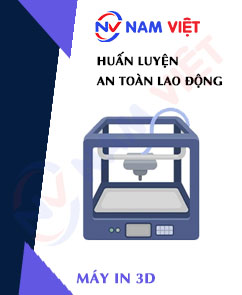

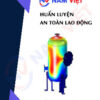





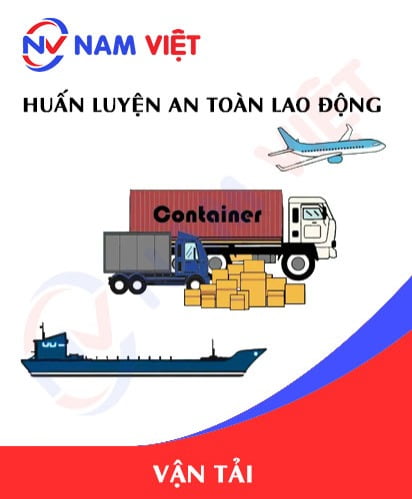
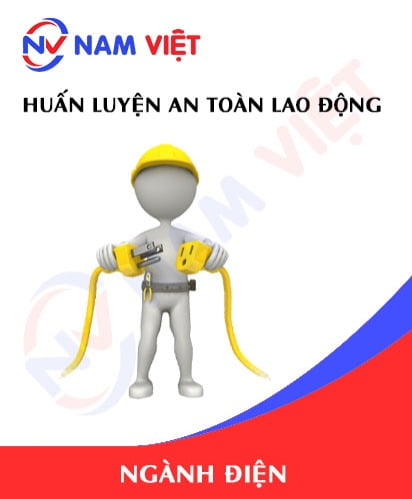
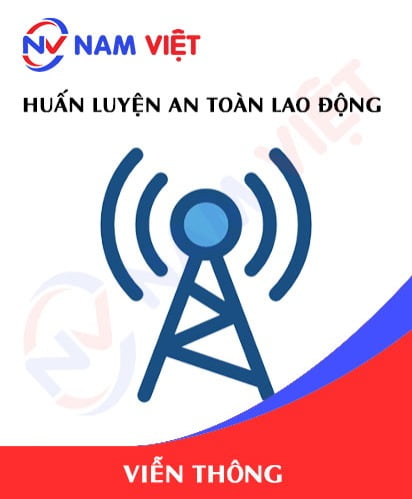
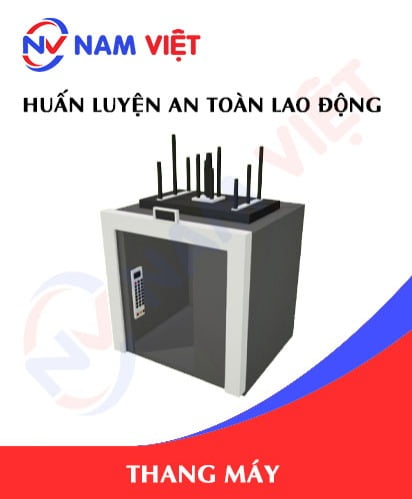


phanminhhang341
Hài lòng với cách tổ chức lớp học